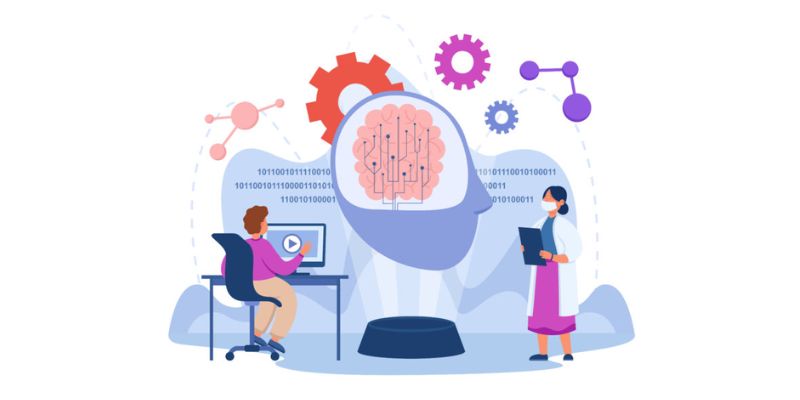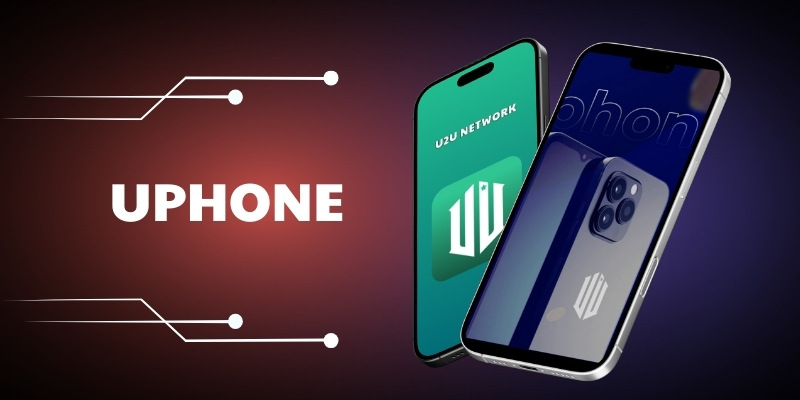Welcome to the crossroads where high tech meets self-love. We’re unpacking a big question: Can technology be a tool for body image acceptance? Let’s dive deep into the digital revolution that’s reshaping how we view our bodies. From virtual reality therapy to positive pixels on your feeds, discover the tech transforming our self-esteem. Open your mind as we explore if screens and wearables can truly help us embrace our reflections. Get ready to join the body positivity movement in the age of apps!
Exploring the Intersection of Technology and Self-Esteem
Virtual Reality Body Image Therapy
Virtual reality body image therapy can change how we see ourselves. It puts us in a 3D world where we can learn to love our bodies. We walk in virtual shoes, seeing ourselves in new, kind ways. This tech teaches our brains to think better about our bodies. It’s like a game but for our self-esteem. We may face a fear, then work through it right there in VR. By doing this often, we start to feel braver and better about our bodies. Some people who have tried this say it feels like magic. They face their fears in the safe space of VR and come out stronger.
Positive Effects of Technology on Self-Esteem
Yes, tech can boost how we feel about ourselves. Self-esteem grows when we use tech well. Social media impact on self-acceptance is big. It can go both ways, but hear this out. We find groups online that cheer us on. We see posts that tell us, “You’re good as you are.” This helps more than you might think. Fitness apps track our runs and make us feel strong. Augmented reality can let us try on clothes without stress. We can join chats and talk to others who get it. Some apps show us a 3D model of our bodies. We can turn it and see it from all sides. It’s like having a smart mirror! Seeing ourselves like this can make us think, “Hey, I’m okay!” We stop being so hard on ourselves.
Your watch might tell you, “Great job on your steps!” And mobile apps help you pick goals that fit you. No one else, just you. This makes you feel like you’re winning. And when we feel like we’re winning, we like ourselves more. AI even jumps in to remind us to stand up and move or take a break. Support online can be 24/7. You don’t have to feel alone with your thoughts. Groups are there any time, just a click away. And if body image is a tough fight for you, e-therapy is there. You can talk to someone who knows how to help, right from your phone.
Did you know that dressing up in video games can make you feel good? Yes, even that is tech fostering a healthy body image. Choose a character, dress it up, and feel like that’s you being awesome. The role of technology in body positivity is getting bigger by the day. It brings us tools that once seemed wild, like 3D body modeling. It helps us see real body standards, not just the fake ones in ads.
All this tech works together to lift us up. We’re in control. We use it to learn, to grow, and to feel better about who we are. It’s not all perfect, but the good is there for us to grab. So next time you look at your phone or your watch, remember, this isn’t just a gadget. It’s a tiny cheerleader, right there with you, helping you see the strong, cool person you really are.

Social Media’s Role in Shaping Body Image Perceptions
Digital Body Positive Campaigns
Social media often gets a bad rap. It’s blamed for making people feel bad about their looks. However, it also has power to do good. Digital body positive campaigns use this power. They try to flip the script. Campaigns share stories and photos that celebrate all body types. This helps make a world where every shape is honored.
We see more posts that say, “Hey, it’s fine to be you.” Can tech lead to more love for our bodies? I say yes. My work digs into virtual reality body image therapy and other tech tools. These tools are made to help us see ourselves in a new light. Imagine trying on clothes in a game that shows your true body. This can foster a healthy view of oneself. Real is in. Fake is out.
Impact of Social Platforms Promoting Diversity
Still, we need diverse images to fill our feeds. Social platforms have a big role. When they push diversity, things change. We get to see beauty in every form. More apps now show real people, in all their glory.
From filters that don’t change your shape to shows with stars of all sizes, tech is stepping up. Online support groups for body positivity are on the rise too. They offer a safe space. Here, you don’t need to fit a mold. You just need to be you. It’s a place to find friends, get support, and grow confidence.
Fitness apps are part of this change as well. They have shifted focus from just losing weight to gaining strength and joy. And wearables track health, not just calories. This switch in tech shows us being active is for all, not just the fit.
AI is a game changer, helping to show real body representation in media. Smart mirrors that cheer our progress, not our size, are on the market. Mobile apps teach us to value our unique beauty. Augmented reality lets us try styles without the stress of fitting in.
We can’t ignore it: tech shapes how we see our bodies. But it’s a tool we can use for good. It can help us feel at home in our own skin. As someone crafting these tools, I see the tide is turning. Tech can be a light in the dark. It’s all about how we use it.
Tech fosters a healthy body image when it shows life unfiltered. When it cheers on all races, sizes, and shapes. We’re stepping into a time when your screen could make you smile at your reflection. Here’s to tech, for showing us real is perfect. And for making us believe it.

Advancing Body Positivity Through Innovative Apps and Wearables
Fitness Apps and Body Confidence
Fitness apps can be game changers. They turn health goals into fun daily tasks. These apps don’t just track progress. They cheer you on. Imagine a tiny coach in your phone, always ready to help.
Are fitness apps good for body confidence? Yes, they can be. They show your success. That can make you feel great about yourself. It’s like having proof that you’re doing well.
Let’s dig deeper. These apps often have goals and rewards. They can make a daily walk or gym session something to look forward to. Also, sharing your achievements with friends can bring support and make you feel proud.
But remember, it’s all about balance. Use fitness apps to celebrate small wins. Don’t let numbers define you. Focus on how you feel, not just how you look.
Wearables and Body Satisfaction
Next, let’s talk about wearables. Devices like fitness bands are everywhere. They count our steps and track our sleep. But the cool part is how they can teach us about our bodies.
Do wearables help with body satisfaction? They sure do. You see your activity in real-time. This helps you understand your body better. It makes you feel in control. That’s a big deal for body positivity.
Wearables also remind us to move. They buzz when we sit too long. It’s like a little nudge to take care of ourselves. And when we listen, we feel good.
But here’s something special. Some wearables can track how you feel. They notice stress and prompt you to take a break. Over time, this can really help with self-care.
It’s not magic, though. You need to listen to your body too. Wearables are tools. They work best when we use them to learn about ourselves.
Both fitness apps and wearables have power. They bring tech and health together in your hand or on your wrist. They give info, support, and a sense of control. All this helps us accept and love our bodies. It’s tech and heart working as one.

Tailoring Tech-Based Solutions for a Supportive Environment
Online Support Groups for Body Positivity
Online support groups can really help us feel better about our bodies. People from all over can share and learn in these spaces. They offer a place to talk, to find friends, and to see that we’re not alone. These groups give tips and cheers for each other. They help us see that all types of bodies are okay.
Tech makes it easy to find these groups. Whether you’re on a big social site or a smaller app, there’s a group that will fit what you need. Some groups have thousands of members, and some just a few. The key is finding a spot where the vibe is good and the support is strong.
In these groups, people talk about their struggles and wins. They may share photos that haven’t been changed or edited. This shows real bodies and helps us all get used to how different and unique we all are. Seeing real folks, not just models, can boost how we see ourselves.
Tech plays a big role in making these groups shine. You can chat in real-time or post a message for later. You can even use video to share stories or meet face-to-face in a virtual way.
Tech helps us learn to love what we see in the mirror. Online support groups for body positivity use tech to bring folks together. They counteract the fake images we see too much online. They promote health, not just looks. These groups are a key part of using tech for feeling better about our bodies.
Tech Advances in Body Image Education
Education is a powerful tool for changing how we see our bodies. And tech is making body image education better than ever. We can use apps and online tools to learn about health and body diversity. These tech tools teach us to value what our bodies can do, not just how they look.
Virtual reality can put us in other people’s shoes. This helps us understand and respect different body types. Programs that use virtual reality can make us feel like we’re in a different body. This can grow our empathy and make us kinder to ourselves and others.
Games and quizzes that teach about body image can be fun ways to learn. They can show us how media changes what we think looks ‘normal.’ This knowledge helps us fight against the urge to change how we look to fit a harmful mold.
We also have many apps that give accurate info about health and bodies. These apps can track our exercise, food, and even sleep. They remind us to take care of our whole self, not just focus on size or shape.
Smart tech can help us form healthy habits that make us feel good. This is how tech plays a major role in body positivity. It gives us facts and skills to build up our body confidence. Tech is changing the game for body image education. It turns learning into a fun, everyday thing that helps us grow stronger on the inside and out.
In this post, we’ve seen how tech touches our self-view, for better or worse. Virtual reality can heal our body image. Smart gadgets and apps lift us up, track our health, and boost our body confidence. Social media, well-used, champions all body types and sparks positive change.
Closing thought: Tech tools are here to help us love ourselves. They bring us together and teach us to celebrate every shape. Let’s use them to build a world where everyone feels good in their skin. We all win when we use tech to support each other. Remember, real confidence starts within, but the right tech can smooth the path.
Q&A :
How can technology promote positive body image?
Technology offers a range of platforms and tools that can encourage body positivity. Social media can be leveraged to share diverse stories and images that challenge conventional beauty standards. Additionally, apps and online communities focused on health, wellness, and body acceptance can provide support and promote a healthy self-image.
In what ways has technology impacted body image perception?
Technology, particularly through social media, has significantly influenced how individuals perceive their bodies. While it can contribute to negative body image through the circulation of idealized body standards, it also provides a medium for body-positive advocates to spread more inclusive and diverse body images, thereby promoting acceptance and self-love.
Can technology help in coping with body image issues?
Yes, technology can be a valuable tool in coping with body image issues. There are various mobile applications designed to help users track their mental health, including their feelings about body image. Furthermore, online therapy platforms connect individuals with professional support to address body image concerns.
What role do virtual reality and AI play in body image acceptance?
Virtual reality (VR) and artificial intelligence (AI) are emerging technologies that have the potential to create immersive experiences that challenge negative body image. VR can simulate environments that encourage body positivity, while AI can personalize health and fitness programs that emphasize body functionality over appearance.
How can we ensure technology is used ethically to support body image acceptance?
Regulating content, promoting diversity, and prioritizing mental health are key factors in ensuring technology supports body image acceptance. Platforms should monitor and manage content to prevent the spread of harmful body image standards. Additionally, creating and highlighting content that celebrates all body types can foster a more inclusive digital environment.



